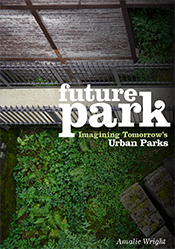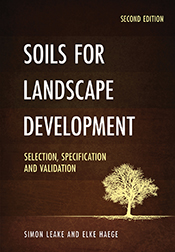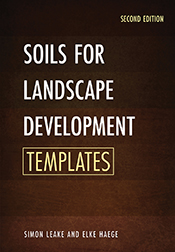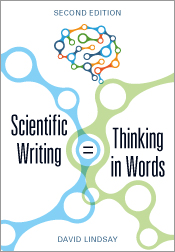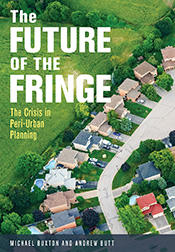Future Park
Imagining Tomorrow's Urban Parks
By: Amalie WrightInvites readers to consider the future of parks in our cities and to find ways of making parks that are inclusive, accessible and resilient urban places.
The first public parks were created on urban 'greenfields'. Once these designated sites had been used, cities looked towards post-industrial sites, and built parks in places that had suffered from environmental degradation, neglect, abandonment and conflict. With finite stocks of urban post-industrial land now also approaching exhaustion, more ways of making parks are required to create inclusive, accessible and resilient urban places. + Full description
Future Park invites Australian built environment professionals and policymakers to consider the future of parks in our cities. Including spectacular images of public spaces throughout the world, the book describes the economic, social and environmental benefits of urban parks, and then outlines the threats and challenges facing cities and communities in an age when more than half the world's population are urban dwellers. Future Park introduces the need to embrace new public park thinking to ensure that benefits continue to be realised.
Future Park illustrates imaginative and resourceful responses to real challenges by highlighting recent proposals and projects. These projects coalesce around four broad themes – linkages, obsolescences, co-locations and installations – responding to contemporary urban paradoxes, and ensuring parks continue to play a vital role in the lives of our cities.
- Short descriptionReviews
"This is a Keeper! It should be required reading for anyone who works in the realm of public space. In fact, it should be on the list for anyone in our industry."
Martin Lambert, President Parks and Leisure Australia (Queensland), 2014
"Wright's obvious attraction to beauty shines throughout this work. Summing up: Highly recommended."
D. E. Cleary, CHOICE, Vol 52(2), pp 101
"Future Park is a well-illustrated book, with many interesting sketches and thoughtfully-chosen photographs... Future Park provides an empirical base for landscape architects, urban designers and policy makers to explore the alternative models of urban public places that address the new challenges we have in this century."
Chuo Li, Journal of Urban Design, Vol 21(3), 2016, pp 393-395
Details
Paperback | September 2013 | $ 69.95ISBN: 9780643100336 | 360 pages | 250 x 176 mm
Publisher: CSIRO Publishing
Colour photographs, Illustrations
ePDF | September 2013
ISBN: 9780643106611
Publisher: CSIRO Publishing
Available from eRetailers
ePUB | September 2013
ISBN: 9780643106628
Publisher: CSIRO Publishing
Available from eRetailers
Features
- Global lessons for park design in Australia
- Ideas-based book with practical application
- Includes spectacular images of public spaces throughout the world
- Imaginative and resourceful responses to real challenges
Contents
Introduction
Linkages
Linkage park-making creates continuous parkland
systems at city or regional scale. Parks may be the
driver for the initiative, or one of the outcomes, and they
can vary considerably in size.
Obsolescences
In 1785, nearly 150 years before pork
chops and sides of beef started rolling
down the High Line like supermodels
down a catwalk, New York became the
capital of the United States.
Co-locations
We Australians like our cities neat and ordered –
‘roads, rates and rubbish’ isn’t one of our favourite
local government election clichés for nothing.
Installations
Of all the
emerging park
typologies
discussed in
this book, this
one is perhaps
the most
elusive.
Where to from here?
Endnotes
Appendix
Project distribution
Index
Places
Projects
People

